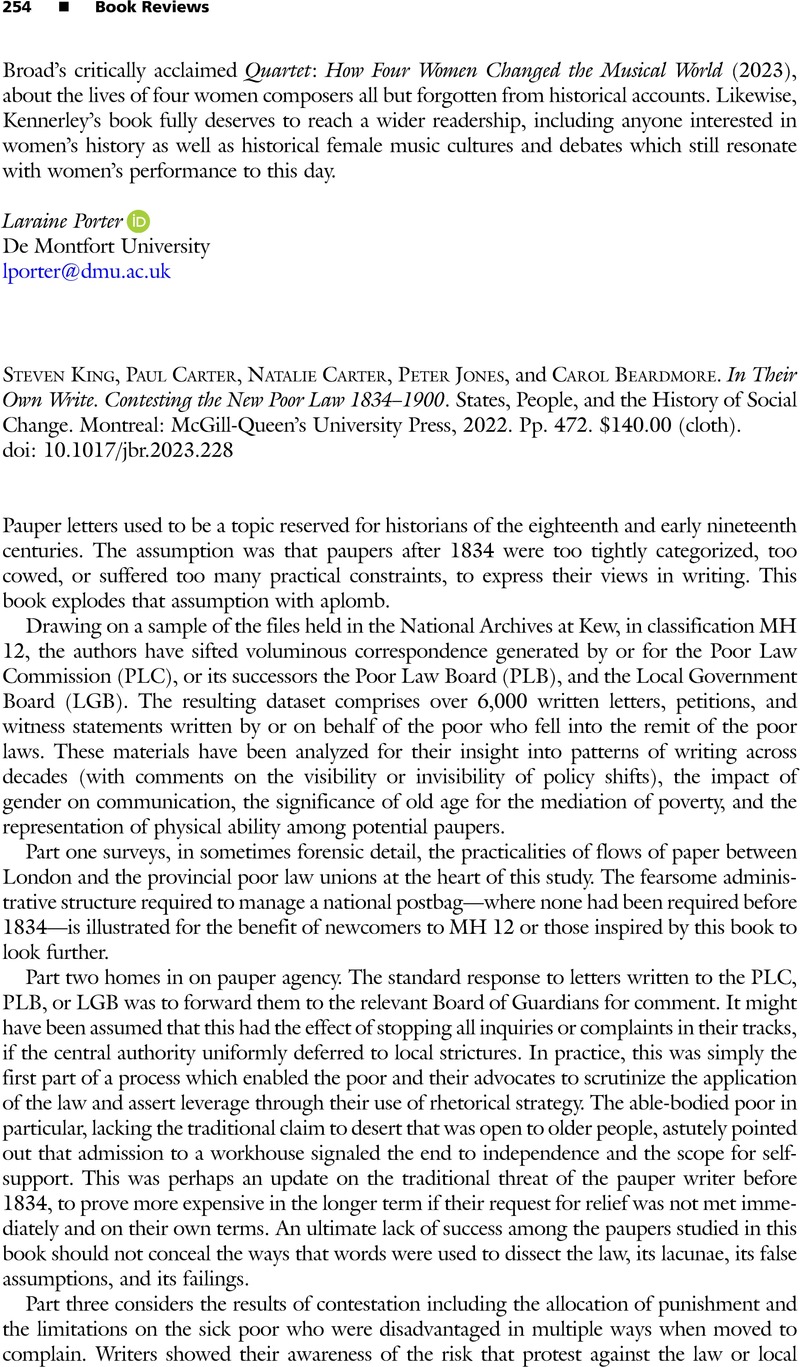No CrossRef data available.
Article contents
Steven King, Paul Carter, Natalie Carter, Peter Jones, and Carol Beardmore. In Their Own Write. Contesting the New Poor Law 1834–1900. States, People, and the History of Social Change. Montreal: McGill-Queen's University Press, 2022. Pp. 472. $140.00 (cloth).
Review products
Steven King, Paul Carter, Natalie Carter, Peter Jones, and Carol Beardmore. In Their Own Write. Contesting the New Poor Law 1834–1900. States, People, and the History of Social Change. Montreal: McGill-Queen's University Press, 2022. Pp. 472. $140.00 (cloth).
Published online by Cambridge University Press: 29 May 2024
Abstract
An abstract is not available for this content so a preview has been provided. Please use the Get access link above for information on how to access this content.

- Type
- Book Review
- Information
- Copyright
- Copyright © The Author(s), 2024. Published by Cambridge University Press on behalf of The North American Conference on British Studies



